The Libyan Arab Force, initially known as the British Arab Force before eventually becoming the Cyrenaica Defence Force in March 1943, was an armed combatant military unit paid, equipped and trained by the British Army during the Second World War.
The Force was comprised mainly of Libyan refugees in Egypt and was operational for three years from August 1940 to August 1943. Though with many regarding the modern-day Libyan Army as a derivation of the Force, in actuality its legacy extends far beyond this.
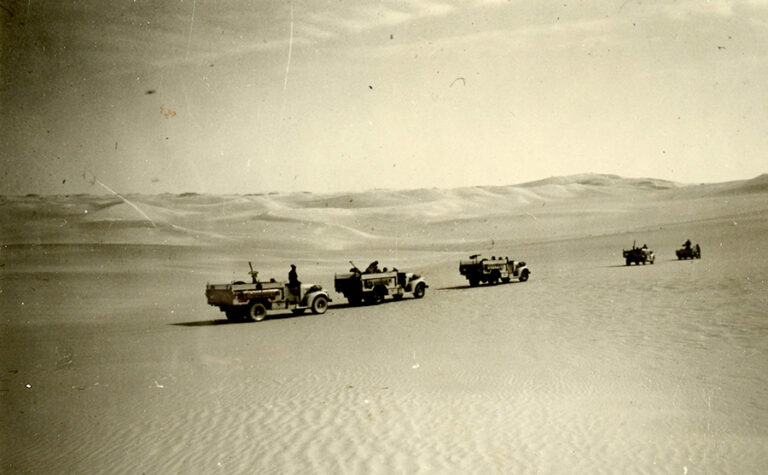
To appreciate how the Libyan Arab Force came to be, it is necessary first to understand the history of Libya in relation to its Italian colonisation between 1912 and 1943. After which time, following the Allied victory over Axis Forces in the Western Desert during the Second World War, Libya came under both British and French administration until gaining its independence as the United Kingdom of Libya in 1951.
1912 to 1943
Despite establishing itself with relative ease in the Western region of Tripolitania, Italy’s colonisation of Libya more generally was never entirely popular. In fact, it was faced with stubborn resistance, overwhelmingly on the part of the Eastern Cyrenaican population for almost the entirety of its occupation.
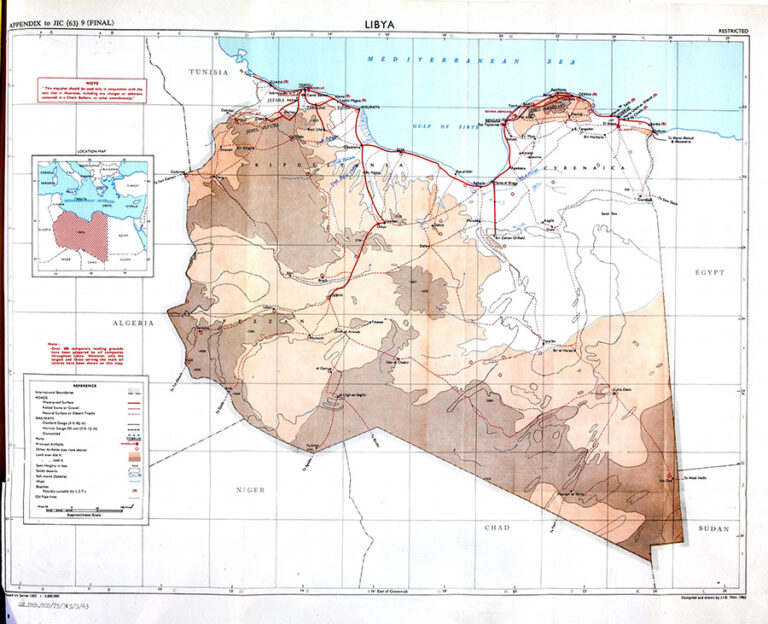
In addition to the German and Ottoman Empire-backed Senussi Campaign during the First World War, throughout the 1920s in particular, resistance against the Italian occupation of Libya ramped up significantly. So much so that large numbers of Cyrenaicans and a small number of Tripolitanian rebels, including several prominent tribal leaders and their followers, fled to both Tunisia and Egypt.
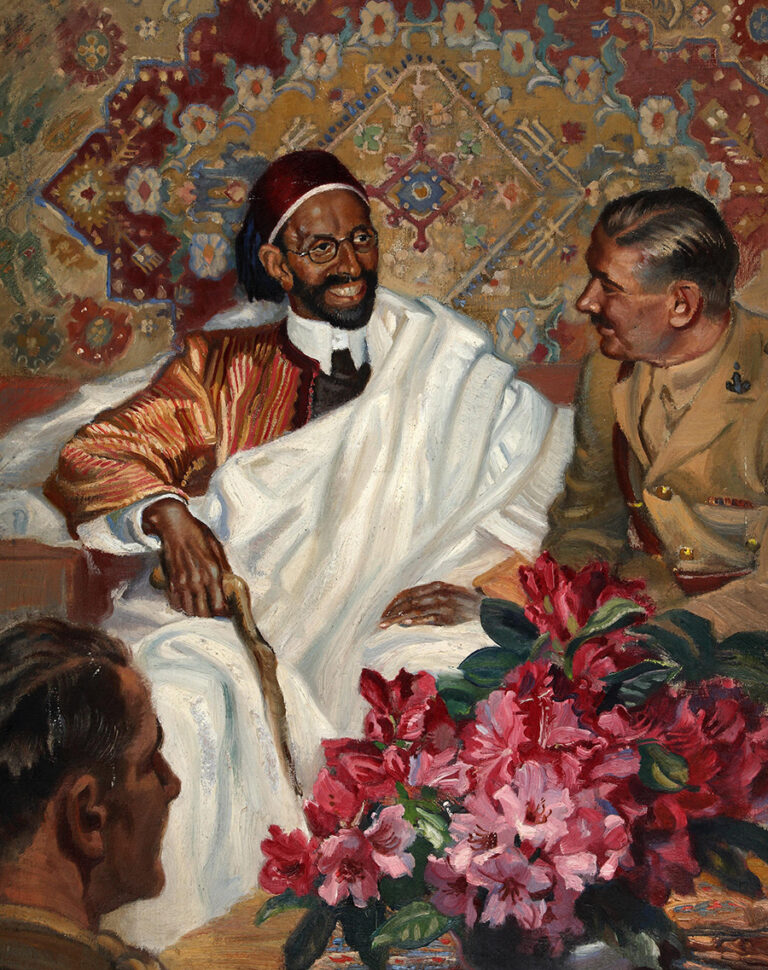
Unlike the Tripolitanians who, although all of Muslim faith, were composed of heterogeneous sects and therefore not entirely united in cause, the people of Cyrenaica were joined together under one religious and political creed: The Senussi Order. Put simply, this movement saw an orthodox return to traditional, simple ideals of Islam and was principally at odds with the Italian exploitation of Libya in the interests of its colonisation. From 1916 until 1969, it was led by Sayed Idris who later became King Idris I, Libya’s first monarch.
In 1923, the Italian government abandoned a significant protection accord concluded with Sayed Idris some years earlier, sparking a long and intense resistance campaign against the Italians in Cyrenaica. Although Idris himself fled to Egypt in 1924, those who chose to remain witnessed not only the Italians’ practical outlawry of the Senussi Order, but also a butchery campaign against members of the resistance, including regular executions and the use of concentration camps. By 1931, the people of Cyrenaica had lost virtually all of their power.
Utilising this background of strong anti-Italian sentiment to its advantage, the British Army was able to collaborate with Sayed Idris who, by November 1939, had been effectively declared as the head of all Libyan refugees and tribal leaders in Egypt, to raise the Libyan Arab Force. In fact, Idris was responsible for recruiting Arab men into the Force – mainly Cyrenaican refugees, but also a small number of Tripolitanian voluntary exiles and Sudanese men living in Egypt.
The beginnings
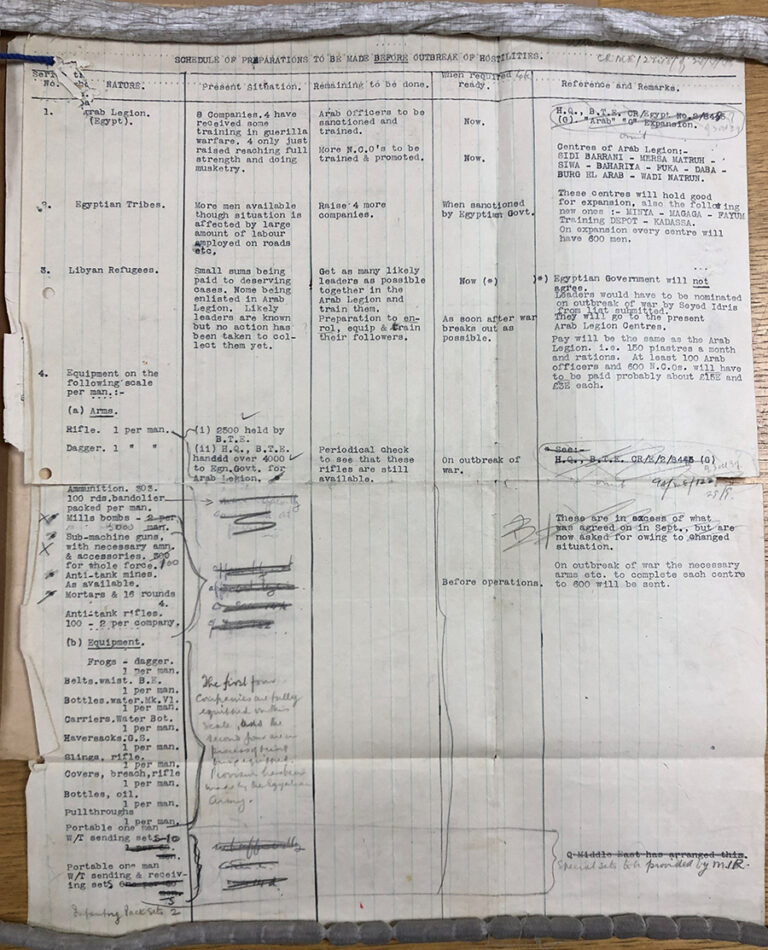
Although the British Army had been making plans for raising a force from the Libyan refugees in August since the summer of 1939, official War Office approval did not come until July 1940. This was prompted by Italy entering the Second World War in June 1940, and Sayed Idris himself approaching the British Army shortly after to offer his full assistance with the project. In fact, he reportedly said that he considered the interests of the Senussi Arabs to be completely identical with the interests of the British (FO 371/24644).
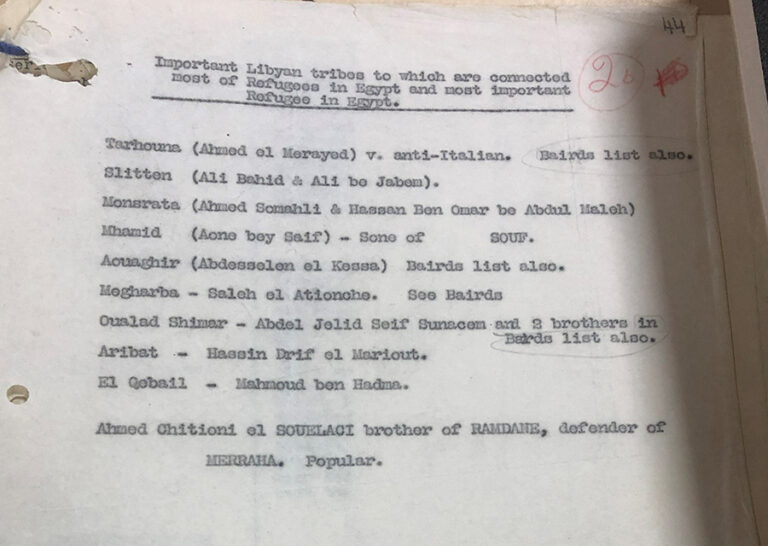
The first step towards actual enlistment of men was taken on 8–9 August 1940 when some 25 tribal leaders of the Libyan refugees in Egypt assembled in Cairo.
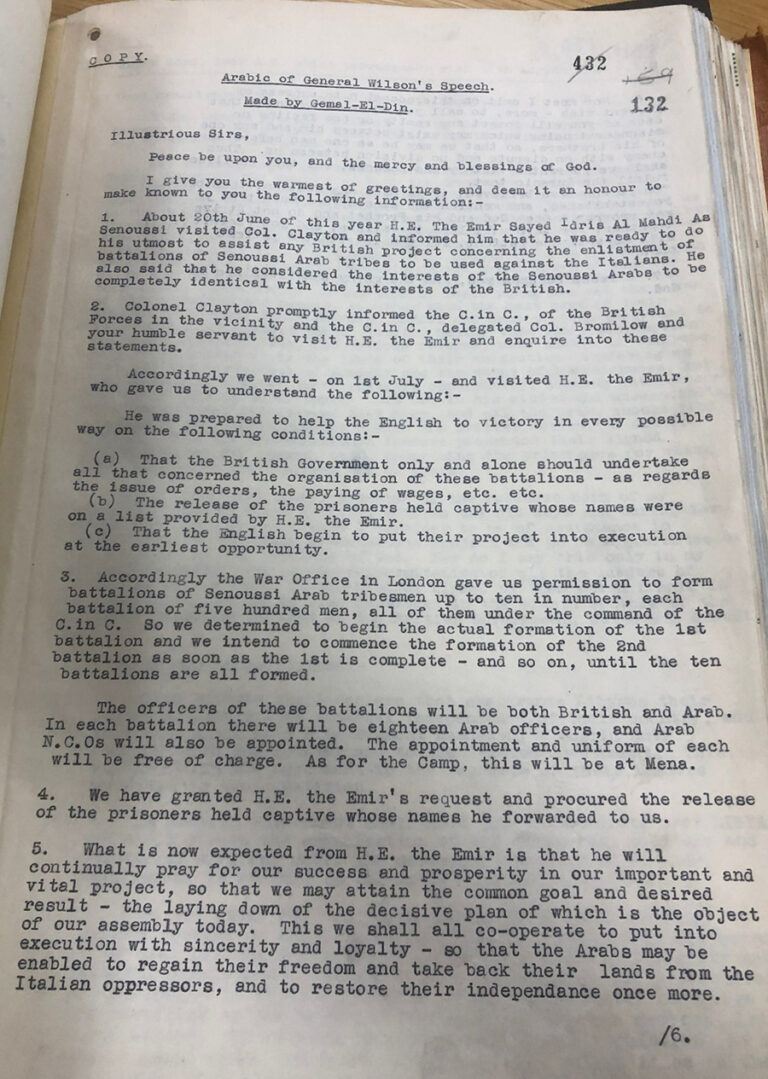
A copy of an address made during this conference by General Wilson (Officer Commanding-in-Chief for Egypt), outlining the conditions of service for the Libyan Arab Force, can be found in FO 371/24644. Afterwards, Idris gave his blessing to the movement, but not before expressing his own set of conditions on behalf of all the tribal leaders present. He also expressed his desire for Libya to eventually become an independent country under British protection, with himself as its leader. All but two tribal leaders (mostly in objection to Senussi overlordship) signed the document agreeing to the conditions of service. The recruitment, training and arming of the Libyan Arab Force commenced immediately thereafter.
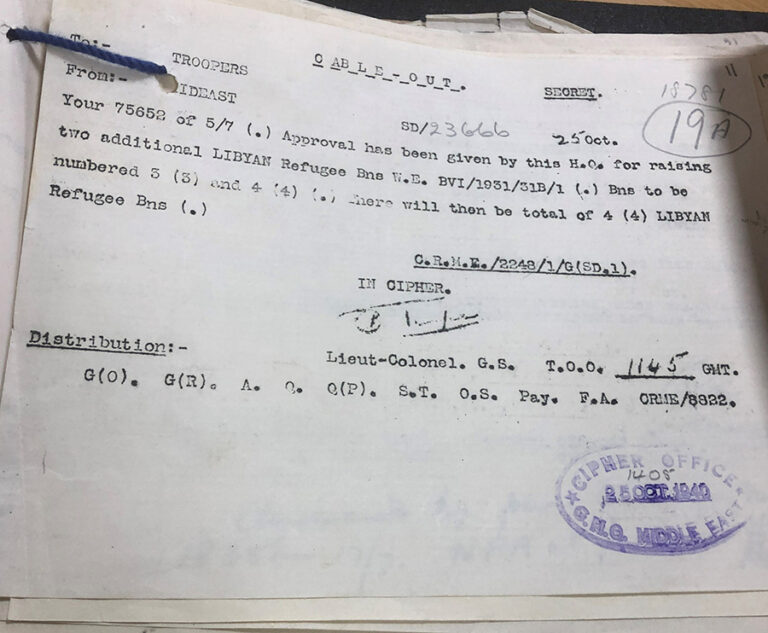
Despite initial proposals for the Force to comprise 10 battalions, each 500-men strong, by its disbandment in August 1943 only six battalions had been established. On average, for every British Army officer/other rank in the Force, there were between 10 and 12 Arabs recruited. The Force’s HQ (102 Military Mission), a Depot and the first four battalions were all formed by the end of 1940. The fifth battalion was raised in 1942 and was comprised entirely of ex-Senussi prisoners of war, previously conscripted into the Italian Army despite most having no sympathies for the Axis’ cause. Other than being listed in the Middle East’s Index to the Order of Battle for the same period as the 5th, very little information is available on the role of the Force’s 6th battalion.
What did they do?
Noted in the initial plans for the Libyan Arab Force in WO 201/336 was a prediction on its likely role once engaged, specifically to ‘assist in resisting any Italian advance if made, or more probably in assisting limited advanced by the British’ (WO 201/336).
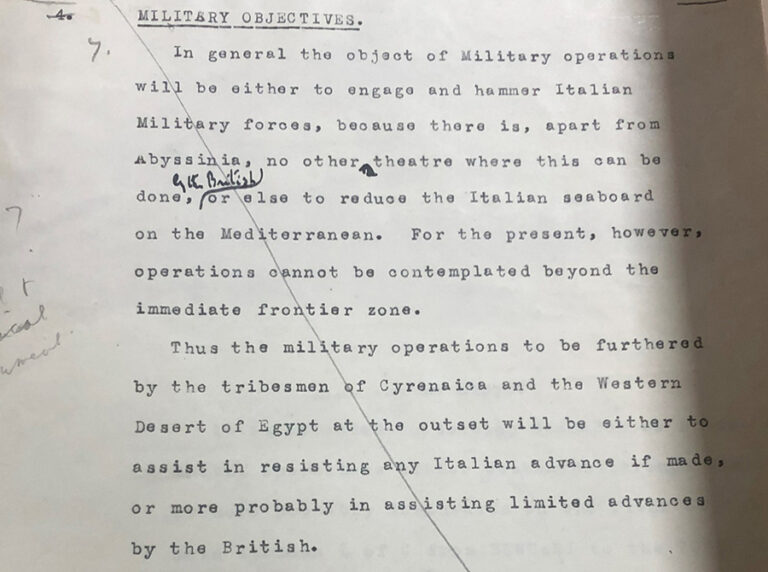
In reality, this assistance was largely facilitated through undertaking a range of auxiliary roles, including but not limited to the construction of defences, guard and gendarmerie (policing) duties. Having said that, men were still expected to carry out their work in often extremely hazardous conditions and at great risk to their lives.
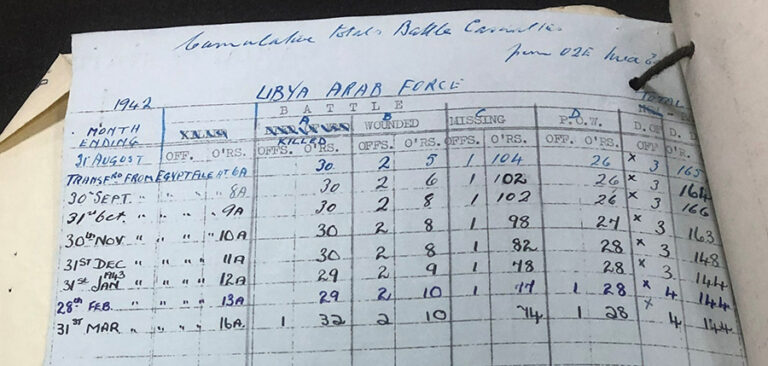
For example, following the Germans’ entry into the Libyan arena in early 1941, three Libyan Arab Force battalions formed part of the besieged garrison of Tobruk until June that year. Facing intense dive bombing and shell fire, the Force stood up well to the Axis forces, despite suffering several losses.
In another example, when the Allies began their second advance into Cyrenaica in December 1941, two Libyan Arab Force battalions were deployed on gendarmerie duties, only for one battalion, based south of Benghazi, to be completely cut off by the enemy shortly after. As a result, the Force suffered considerable losses, mostly Arab men but also a handful of British officers.
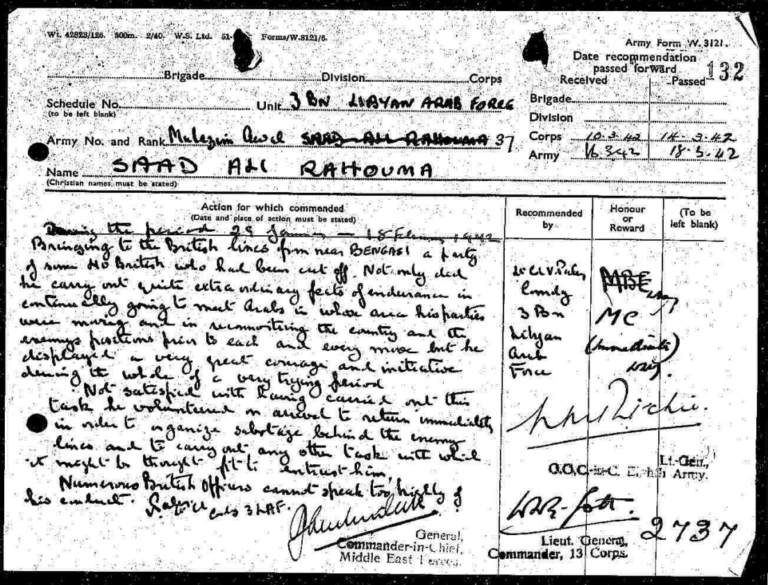
One surviving officer, Saad Ali Rahouma of the 3rd Battalion, was awarded the Military Cross for his service during this time. In leading men back to British lines, showing ‘extraordinary feats of endurance’, it was noted at the time that ‘British officers cannot speak too highly of his conduct’ (WO 373/19/89).
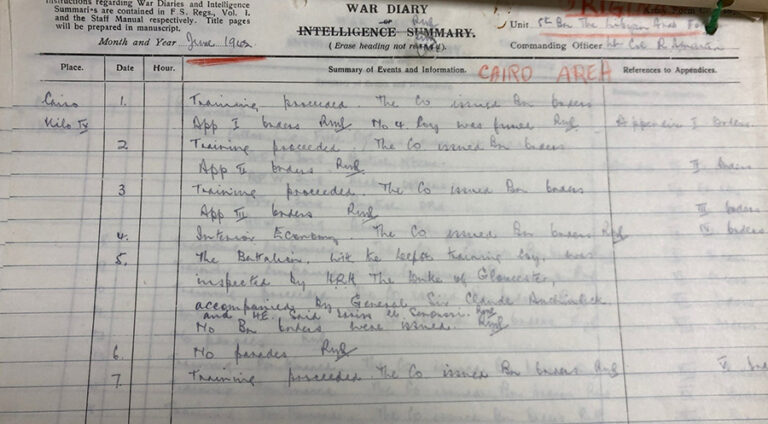
The 5th battalion, on the other hand, never left Egypt despite receiving thorough training lasting six months. In June 1942, the battalion was inspected by The Duke of Gloucester during his Middle East tour. It was disbanded in December 1942, less than a year after it was formed, owing to a general personnel shortage across the Force.
1943
The year 1943 saw the Axis’ retreat from Africa, leaving Libya in the hands of British and French administration. The Force subsequently changed its title to ‘The Cyrenaica Defence Force’ and plans were drawn up for its eventual disbandment later that year. This included a strategy for transferring significant numbers of Arab ranks to a new gendarmerie unit under British Military administration in Cyrenaica.
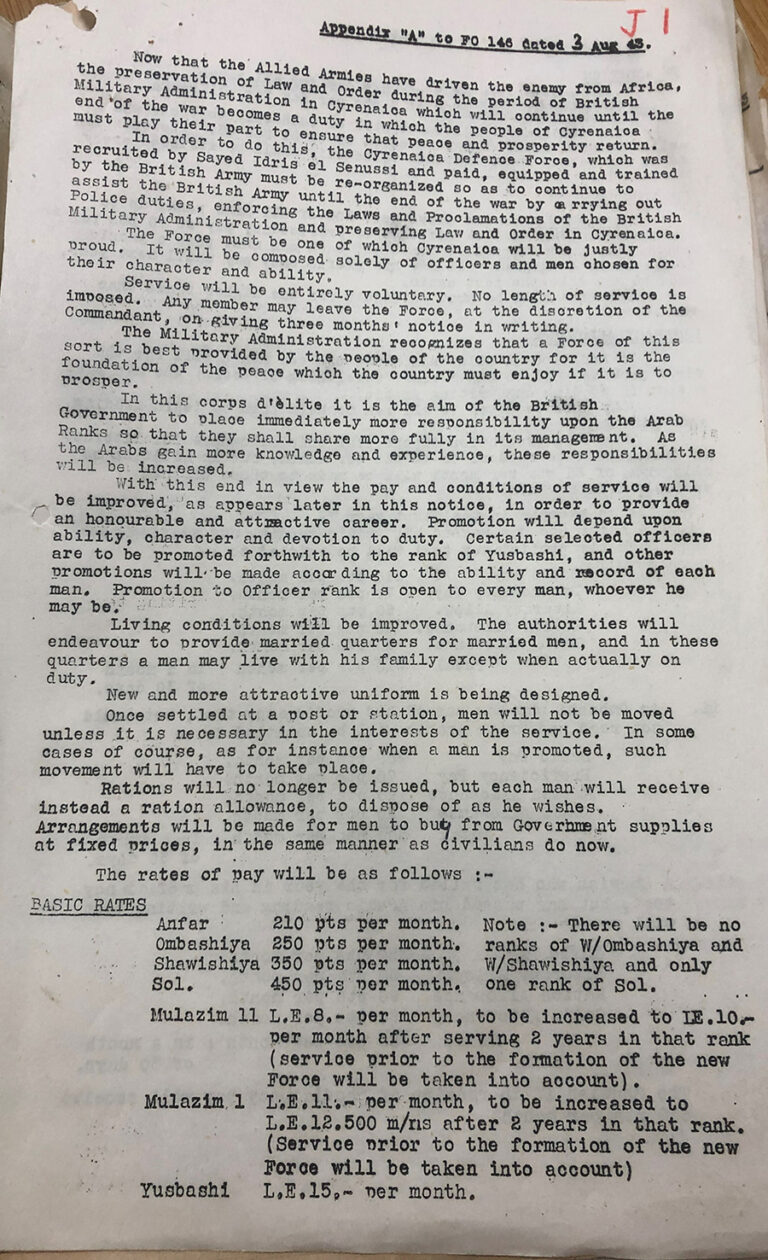
Its intended role was to continue to assist the British Army until the end of the war by carrying out police duties, enforcing the laws and proclamations of the British Military administration and preserving order in Cyrenaica. Service was entirely voluntary and men were chosen for transfer on their ‘character, ability and devotion to duty’ (WO 169/9091). Crucially, the British were keen to place more responsibility on the Arab ranks.
Those who didn’t transfer remained a part of the original Libyan Arab Force (then Cyrenaica Defence Force) until all four battalions, its HQ and the Depot were disbanded in late August/early September 1943.
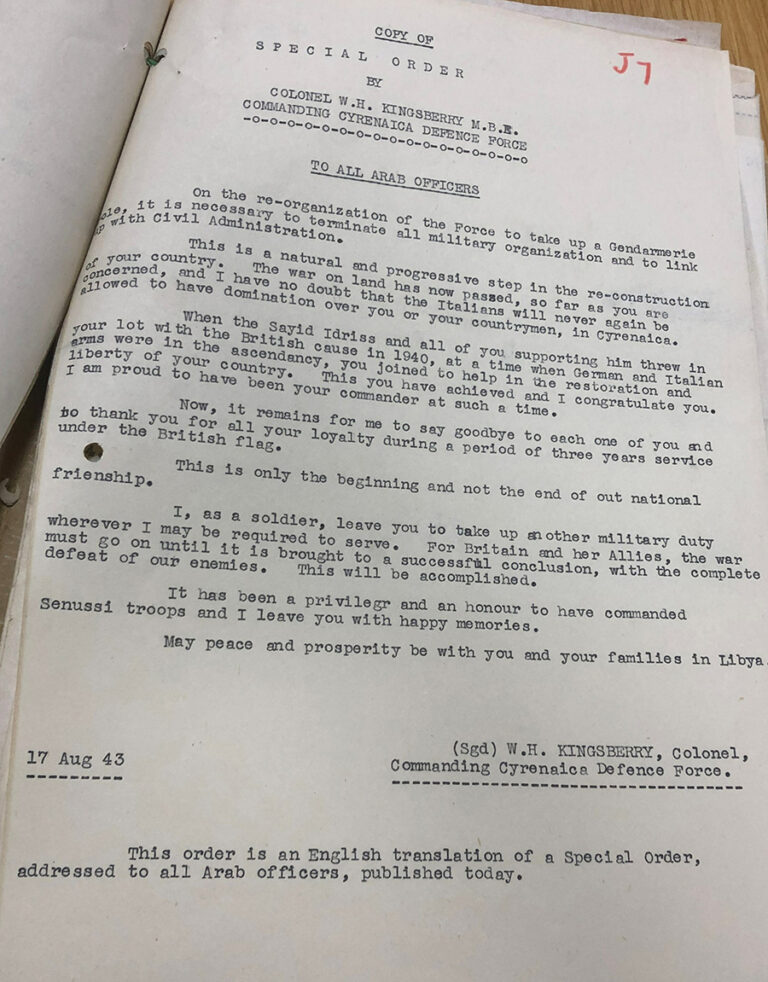
Just prior, on 17 August 1943, Colonel W H Kingsberry, commanding Cyrenaica Defence Force, expressed his heartfelt thanks to all those who fought in the Force. In closing he wrote:
‘It has been a privilege and an honour to have commanded Senussi troops and I leave you with happy memories. May peace and prosperity be with you and your families in Libya.’
WO 169/9091
Excellent work. There is hardly anything published on the subject.
I have researched the subject for sometime, and it was so hard to access any documentary information, other than a few documents from the Archive that I managed to access, the rest was from secondary sources from academic papers.. Even Marshal Wilson’s memoire, skipped over this, and mentioned a couple of paragraphs in page 31. Popsky’s Private eye book, lacked substance and facts on the formation of the LAF, and sadly paid more attention to ridicule and sarcasm.
Another truly heroic story was in Lord Rennell of Rodd’s memoire of the BMA in Africa 1941-47 (published 1948). However, the research of the Italian historian Luigi Rossi, and his paper on the role of Idris in Libyan’s independence, gives guidance on some of the the key documents in the archive.
Its time for the British National Archive, to follow suit of the American one, and expedite its digitisation.
Thank you and good luck.
Remarkable research
Thank you for publishing these documents and this consistent narrative, which did not overlook the beginning and the end.
We hope to issue a detailed study of the Libyan Arab Force, so that we may have a clearer picture that is still blurry.
This is an excellent piece of work, publicizing a little-known British army unit.
Congratulations.
The war diaries of at least some Libyan Arab Force units are available at the archives for researchers.
All the best
Andreas
Thank you for the information on the LAF. My father was posted from 11th Scottish Commando’s to the 4th Battalion of the LAF in 1941 and then to the CDF from 1043-1945.
Thank you so much for posting this, I’ve wanted some information on this unit for ages
Seems like poor old Kingsberry would never see Lybia prosper though, I read he was killed by a V1 in Antwerp October 1944
Excellent documentation on a little known force that served under the UK’s aegis in the desert in WW II. Thank you for this effort. I look forward to any new postings.
VR, Capt. (Ret.) S. Elliott US Army